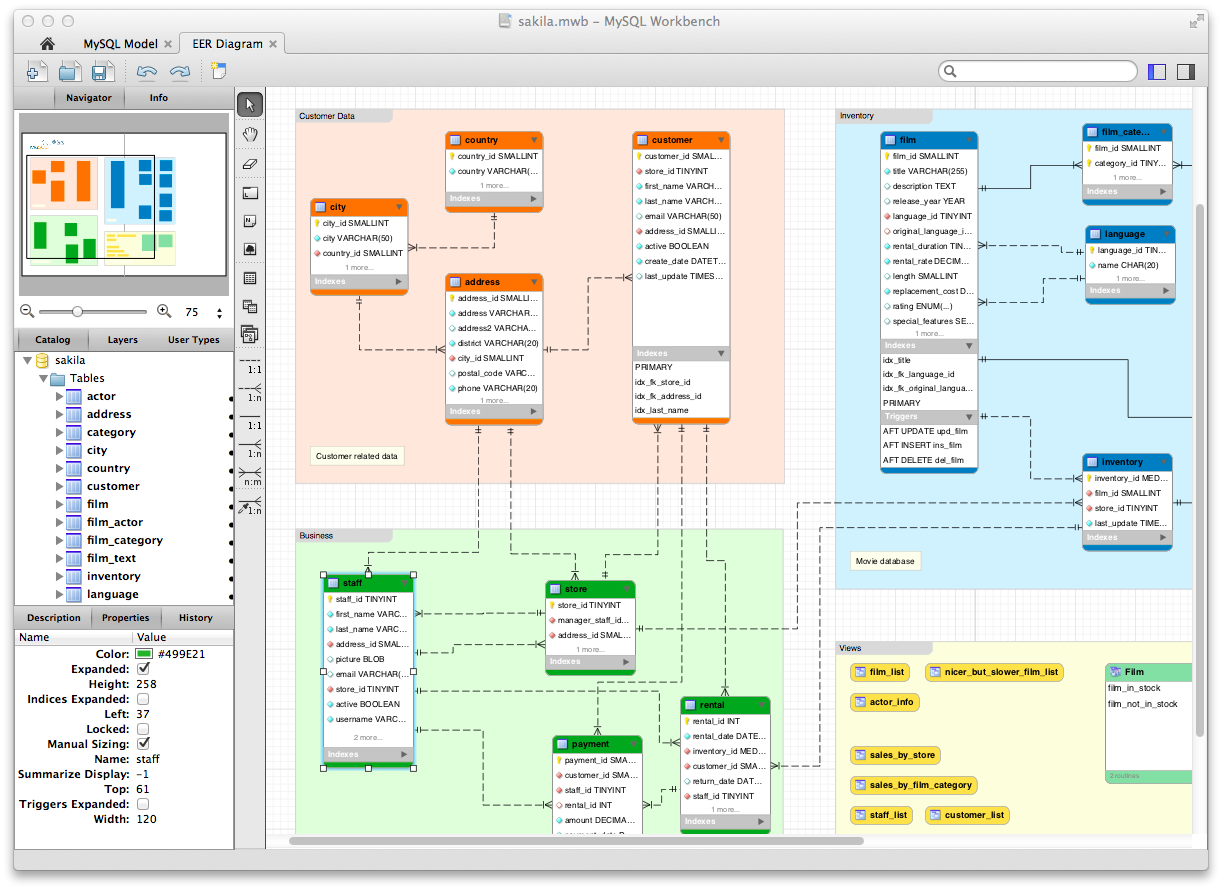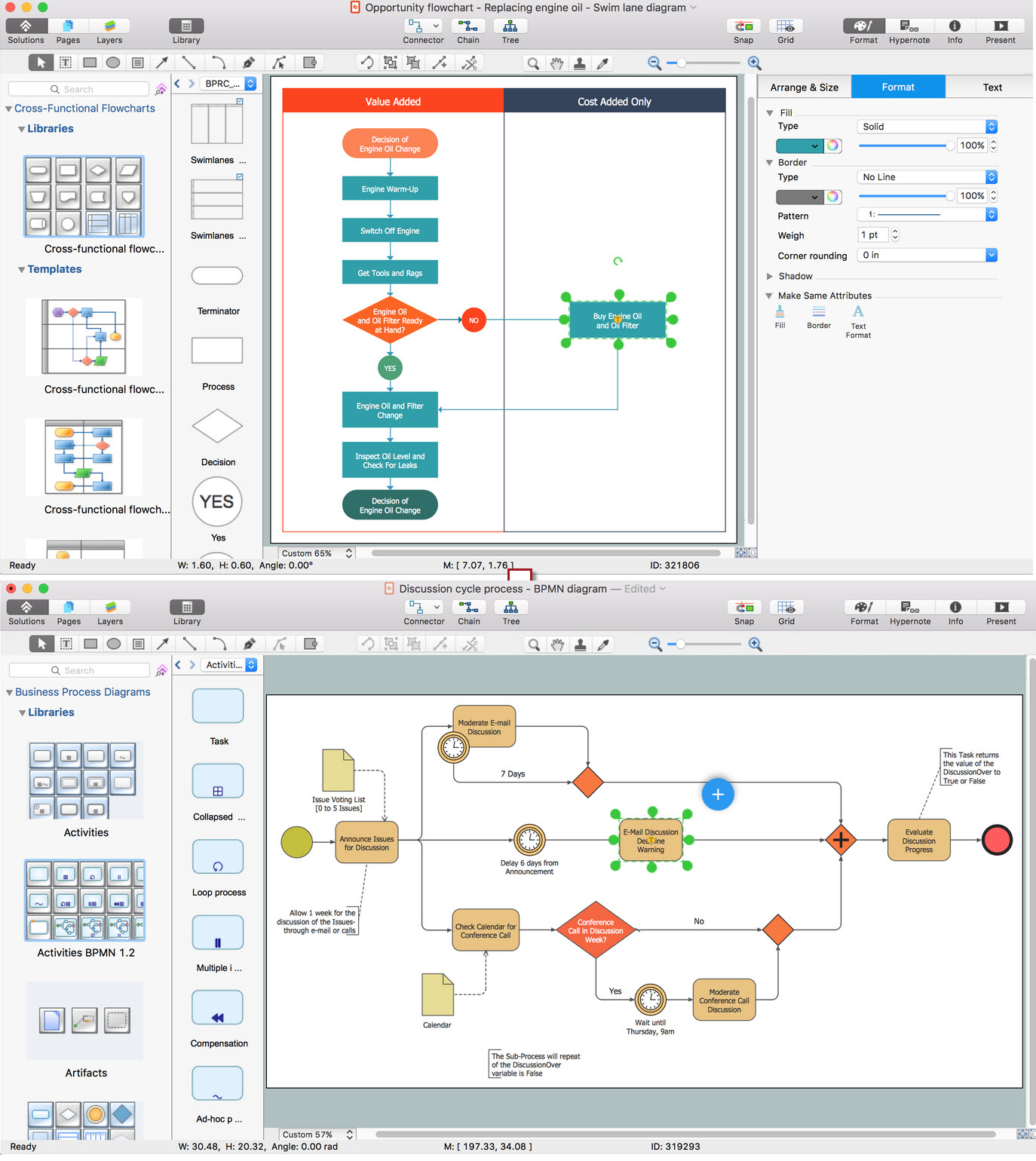

In Server Explorer or SQL Server Object Explorer, expand the node for the sample database.
#Visual studio mac database model update
In the upper-left corner of the Table Designer, select Update ( Shift+ Alt+ U). In the T-SQL pane, update the last line to match the following sample: CONSTRAINT FOREIGN KEY () REFERENCES () In the text box that appears, replace the text ToTable with Customers. If you expand the Tables node in Server Explorer, you see the two tables: The Orders table is created in the local database file. In the upper-left corner of the Table Designer, select Update, or press Shift+ Alt+ U. Add a comma at the end of the OrderQuantity line, then add the following sample before the closing parenthesis: CONSTRAINT PRIMARY KEY () Īdd an index constraint to the Customers table. Name the Orders table by updating the first line in the script pane to match the following sample: CREATE TABLE.

Set OrderID as the primary key, and then delete the default row. The Customers table is created in the local database file.Īdd another table, and then add a row for each entry in the following table: Column name In the Preview Database Updates dialog box, select Update Database. In the upper-left corner of Table Designer, select Update, or press Shift+ Alt+ U. Add a comma at the end of the Phone line, then add the following sample before the closing parenthesis: CONSTRAINT PRIMARY KEY () Name the Customers table by updating the first line in the script pane to match the following sample: CREATE TABLE. Right-click on the default row ( Id), and then select Delete. Right-click on the CustomerID row, and then select Set Primary Key. In the grid, add a row for each of the following entries: Column name

By adding rows to the grid, you'll add columns in the table. The Table Designer opens and shows a grid with one default row, which represents a single column in the table that you're creating. Right-click on Tables and select Add New Table. In Server Explorer, expand the Data Connections node, and then expand the SampleDatabase.mdf node. You'll also create a foreign key to specify how records in one table correspond to records in the other table. In this section, you'll create two tables, a primary key in each table, and a few rows of sample data. Finish adding the connection by selecting OK.Ĭreate tables and keys by using Table Designer In the Add Connection dialog box, make sure that Microsoft SQL Server Database File is selected under Data source, and then browse to and select the SampleDatabase.mdf file. If you can't expand the Data Connections node, or the SampleDatabase.mdf connection is not listed, select the Connect to Database button in the Server Explorer toolbar. Open the Properties window by expanding the Data Connections node, right-clicking on SampleDatabase.mdf, and then selecting Properties. Expand (localdb)\MSSQLLocalDB > Databases, and then right-click on SampleDatabase.mdf and select Properties.Īlternatively, you can select View > Server Explorer, if that window isn't already open. Select View > SQL Server Object Explorer to open the SQL Server Object Explorer window. You can view the connection string for the SampleDatabase.mdf file by opening the Properties window of the data connection: On the Choose your Database Objects page, you'll see a message that says the database doesn't contain any objects. On the Save the Connection String to the Application Configuration File page, choose Next. On the Choose Your Data Connection page, select the SampleDatabase.mdf file in the drop-down list, and then choose Next. On the Choose a Database Model page, choose Next to accept the default (Dataset). On the Choose a Data Source Type page, choose Database and then choose Next. The Data Source Configuration Wizard opens.


 0 kommentar(er)
0 kommentar(er)
